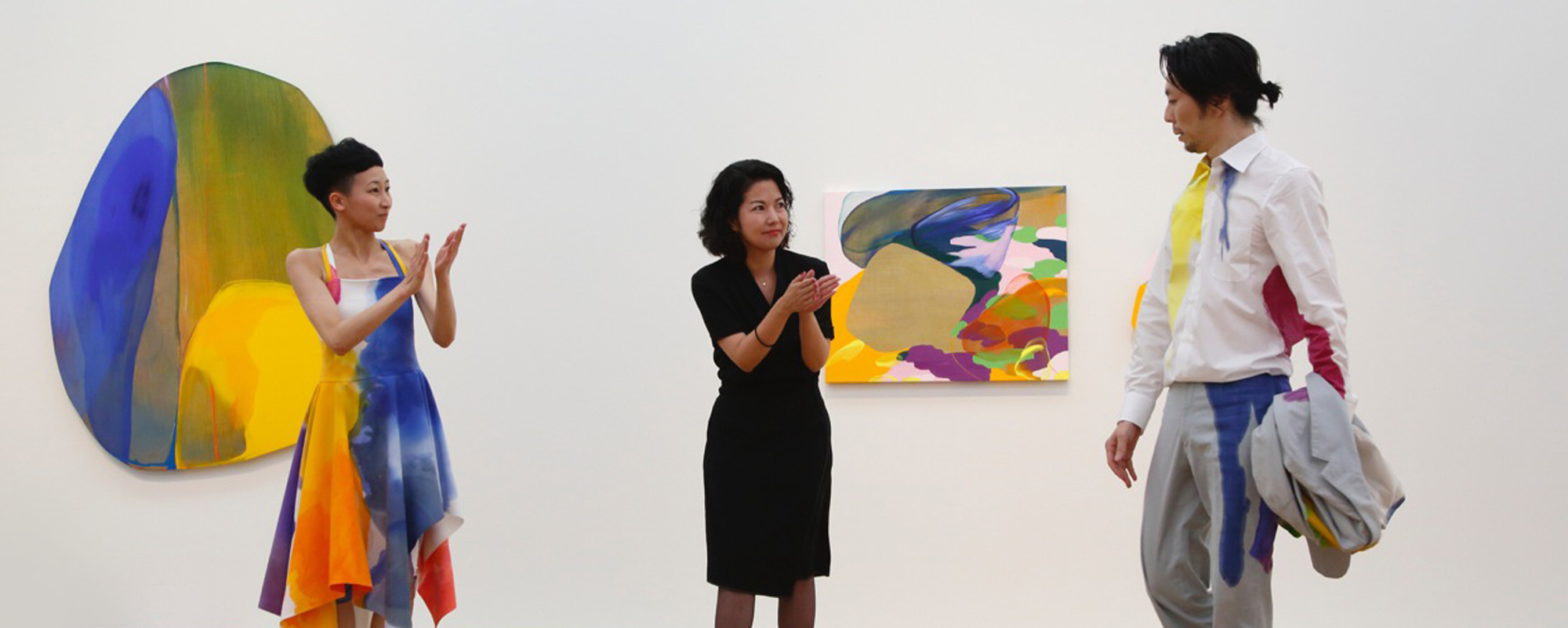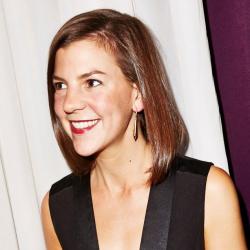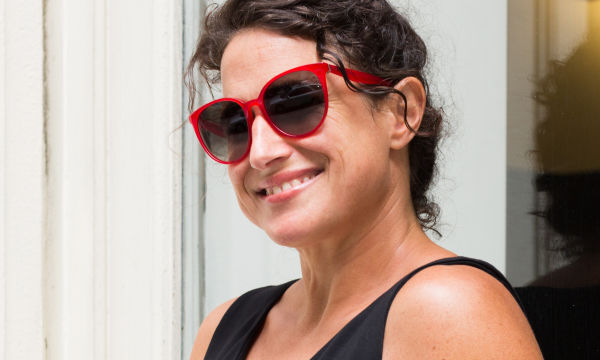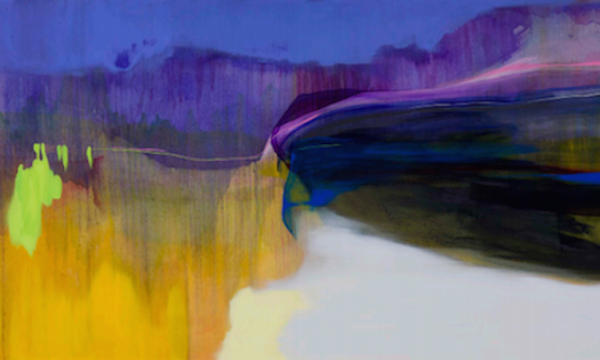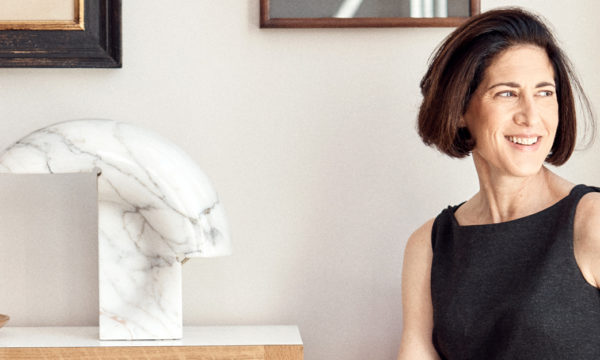Artist Manika Nagare on Discipline and Creativity
November 26, 2016 | Filed in: Woman of the Week
Exciting news: Next spring, MM.LaFleur is collaborating on a limited-edition print with Japanese artist Manika Nagare, who is known for her vivid abstract landscapes rendered from sheer layers of oil paint. Her latest works, inspired by the aftermath of the earthquake and tsunami in Fukushima in 2011, are on view at the Miyako Yoshinaga gallery (547 West 27th Street) until December 17. Here, Manika discusses her painting technique, life as an artist, and how she knows when to step away from the canvas.
I WAS BORN into an artist family and raised in Kagawa, in the western part of Japan. My mom was a stage actress, and my father was a sculptor. Making art was a big part of my upbringing. I enjoyed drawing and painting as a child, but when I got to school, it was hard for me to adjust to art classes, so for many years, I thought I wasn’t a very good artist after all. Then, I tried oil painting when I was 15 years old, and I took to it right away. That was the beginning of my career as a painter.

“A Body in Two 1,” by Manika Nagare, 2016.
WHEN I WAS 17 years old, I knew that I wanted to study oil painting at university. But I also knew how difficult it is to be a professional artist, because I’d seen how hard it was for my father and mother and their friends who worked in the art world. I didn’t want to stop making art, but I also didn’t want to keep doing it if I wasn’t any good. So I carried my paintings to a gallerist and some curators that I knew through my father, and I said, “If you think I don’t have talent, please tell me honestly. I don’t want to be an artist if I don’t have talent.” But they were kind, and they told me I had potential, and that I should try. And since then, I have believed in myself. It’s my career. I haven’t ever questioned whether I should ever stop. I always know I want to continue. But it can be tough sometimes.
MANY PEOPLE SAY that my oil paintings look like watercolors.My technique is very different from the western style of oil painting, where colors are mixed together on a palette. Instead, I create colors by layering one on top of another, directly on the canvas. In the beginning of my process, I mix pigments with a lot of oil, and so every layer is transparent. I glaze many colors day by day, and step by step. When you look at my paintings in person, you will see that the blue is not only deep blue, but it also contains purples, pinks, reds, and even yellow.
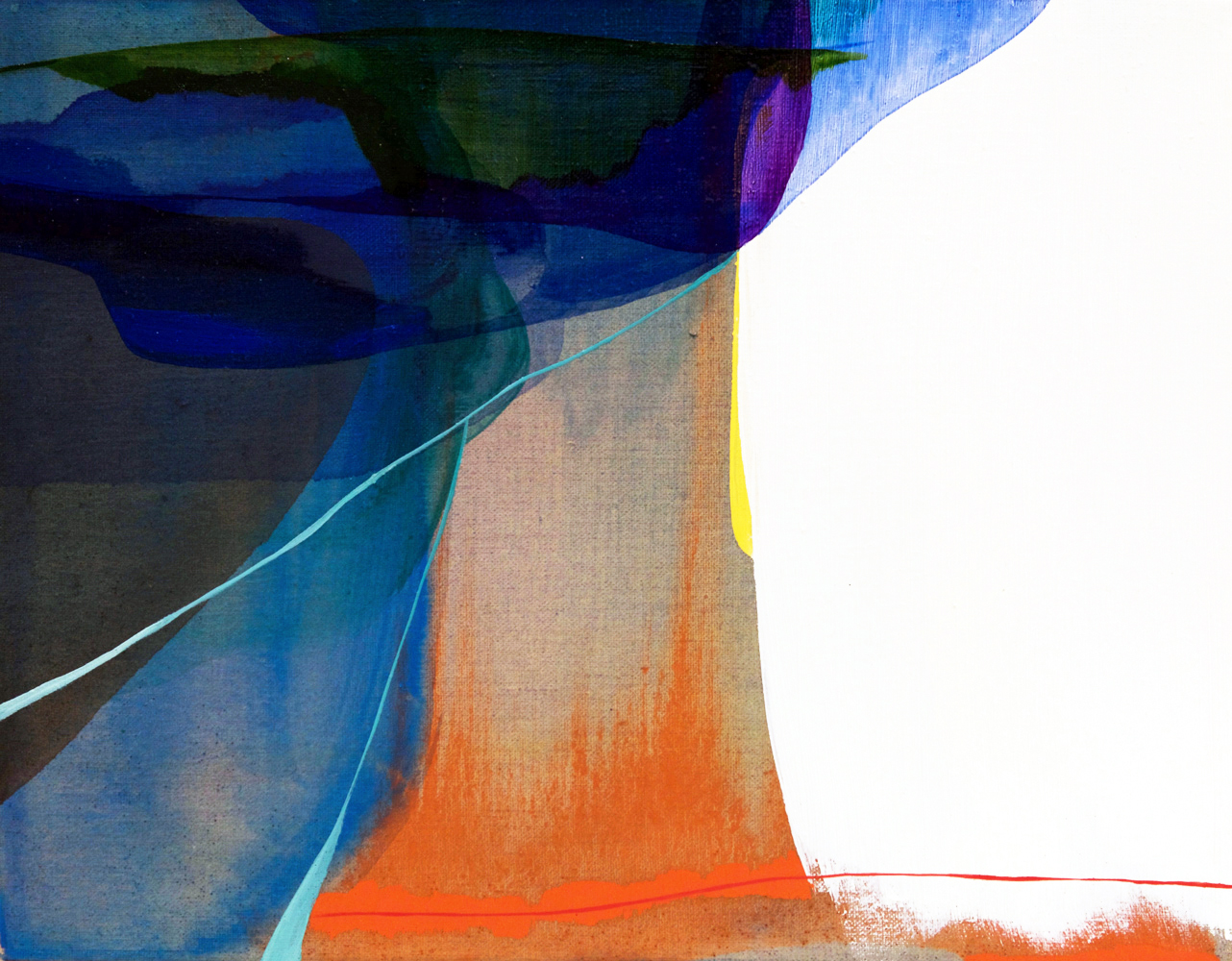
“Tails,” by Manika Nagare, 2015.
I BEGAN PAINTING MORE LANDSCAPES after the big earthquake happened in Japan in 2011. I established a nonprofit organization to do workshops with kids in Fukushima, where the earthquake hit, so I was going back and forth to that area a lot. I realized that even though the tsunami crushed everything, the organic lines of the mountains and the earth were very strong, and it inspired me to start painting landscapes.
I KNOW A PAINTING IS FINISHED when I look at it for more than three days and I still don’t want to change it. Sometimes, I can’t stop myself from adding more, and then I know it’s not complete.
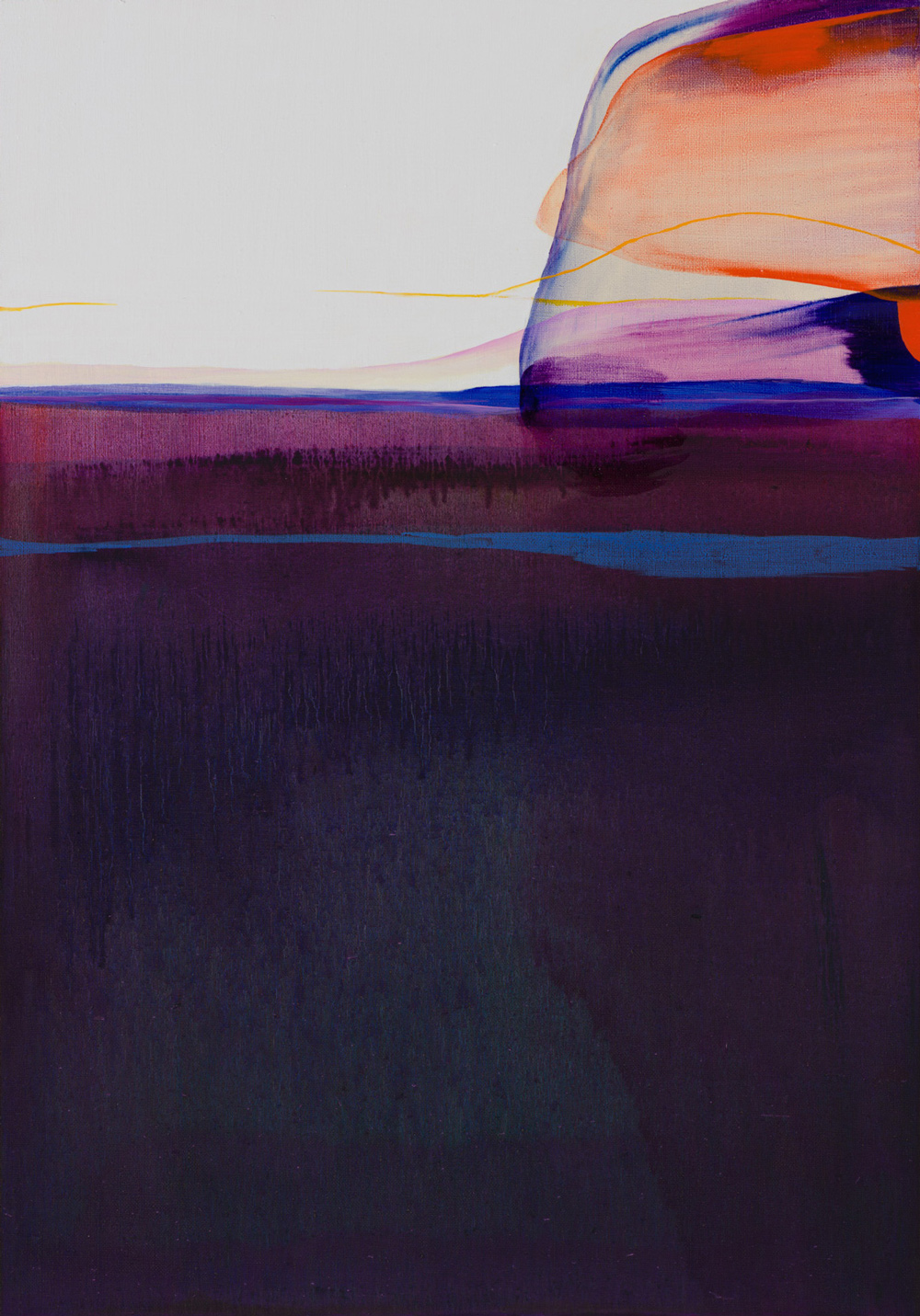
“No Straight Line in Nature,” by Manika Nagare, 2016.
IN JAPAN, IT IS VERY HARD to be an artist. Contemporary art is not a part of people’s lives the way it is in New York, where many people go to museums and the theater quite often. I lived in New York from 2002 to 2008, and when I was there and I told people that I was an artist, they would say, “Oh, what kind of art do you make?” But here, if I say that, most people are just surprised to see an artist at all. They say, “Oh, wow. How can you survive?” Artists are more rare in Japan.
I RENT MY STUDIO SPACE from a friend’s company, and I go there from Monday through Friday, 9:00 a.m. to 5:00 p.m., and focus on my canvases during that time. I like to have a schedule with structure. It helps me stay organized and disciplined. And when I finish around 5:00 p.m., I say, “That’s it, I’m done.” And I can go to drinks with my friends.
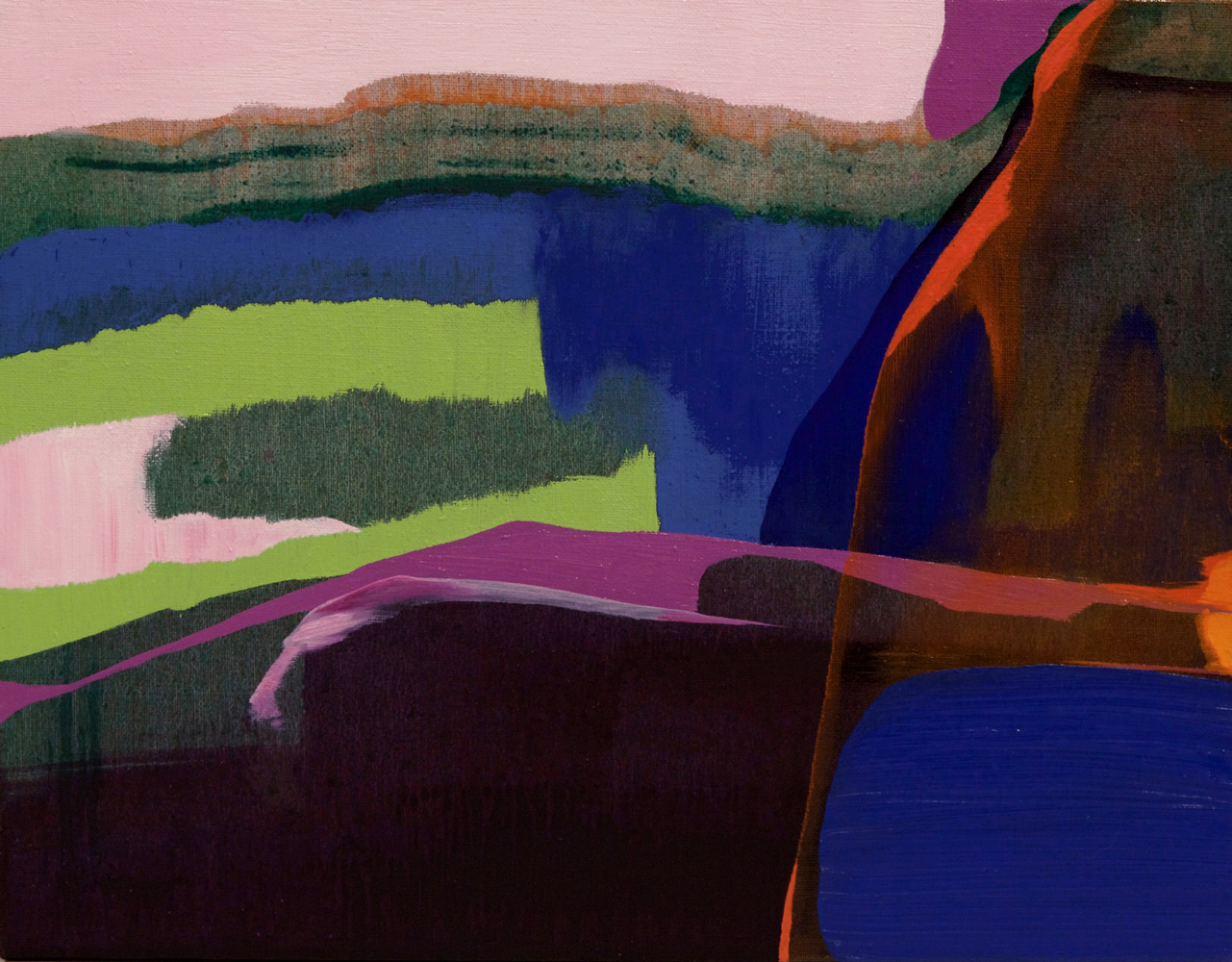
“Cicada Chirps,” by Manika Nagare, 2016.
WHEN I HAVE TROUBLE with one of my paintings, I stay at the studio and try to continue. I don’t leave and take a walk, which is what a lot of people do. Even when things are not going well, it’s helpful for me to keep stepping forward and making things.
I NEVER THOUGHT that dance would be part of my work, but a couple of years ago, a producer suggested that I try it. I realized that contemporary dance is very effective for my expression, because dancers create organic lines with their bodies that are similar to what I paint. Last spring, I brought a couple of dancers to Fukushima for a kids’ workshop. Then, for my show, I asked them to express what they saw in the landscape there, and create movements based my paintings. I also designed and painted their costumes.
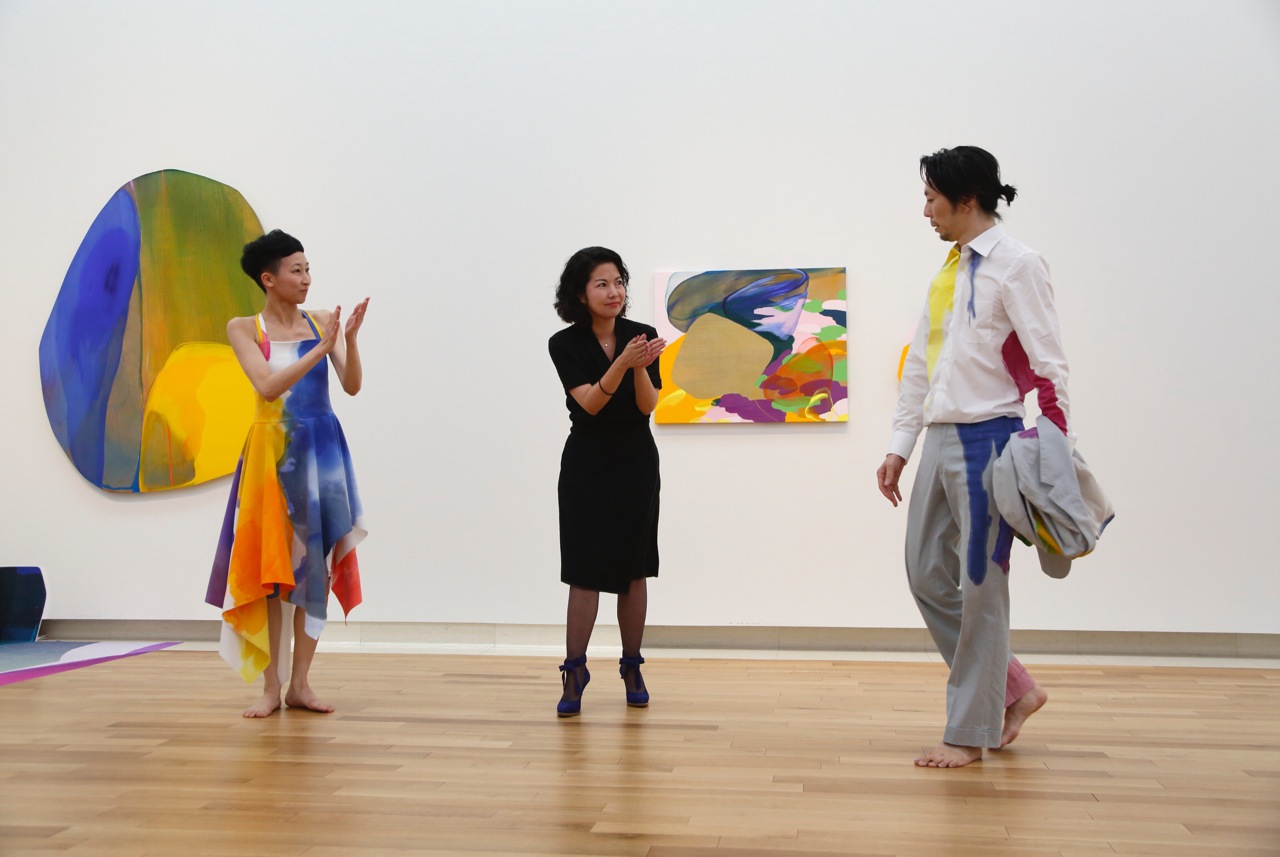
Manika wears the Tory dress at her art opening, with two collaborating dancers. Photo by Keizo Kioku. Courtesy of Takamatsu Art Museum.
FOR THE COLLABORATION WITH MM.LAFLEUR, my paintings will become your dresses, with the lines and shapes and colors based on landscapes from Japan. I’m very excited to see what it looks like. It came about because I am friends with MM.LaFleur’s designer, Miyako Nakamura, and she asked if I would be interested.
MM.LAFLEUR’S DRESSES make me feel very professional. Whenever I have a show opening, I pick my outfit to reflect my work. I decided to wear the Tory dress in black when the dancers were performing, because in Kabuki theater, the people who help behind the scenes wear black—so I felt that wearing black would be supportive to the dancers. More recently, I wore the Silvia dress to the gallery in New York, because the paprika color fit with my new paintings perfectly. It made me feel like part of my show.
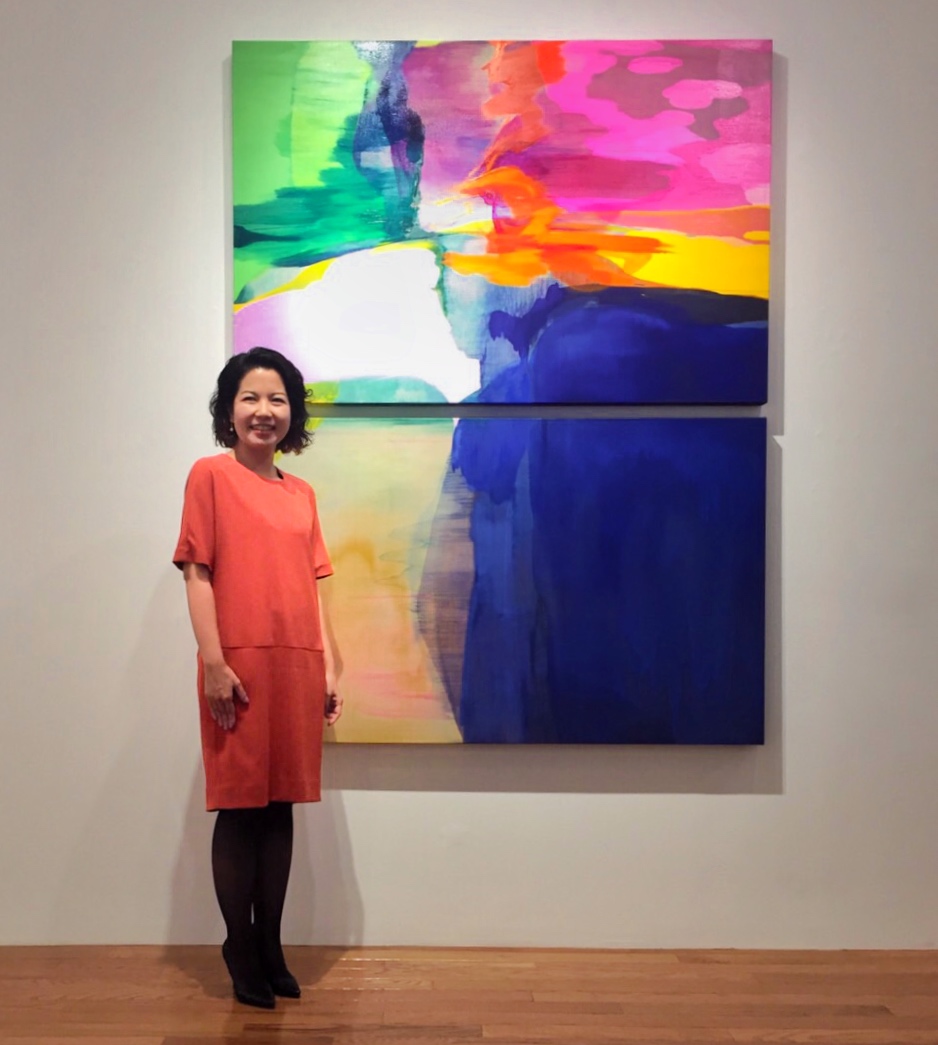
Manika wears the Silvia dress at her art opening.





